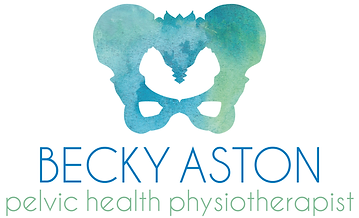Using a TENS machine for Labour pain
- Becky Aston
- Jun 9, 2020
- 3 min read

What is a TENS machine?
TENS stands for Transcutaneous (through the skin) Electrical Nerve Stimulation. I always think anything that describes itself as electrical stimulation sounds a bit scary, but TENS machines have been used for Labour pain and other painful conditions for many years. In fact, the first wearable and portable TENS machine was patented in the US in 1974 (the year I was born)
How does it work?
TENS is a…..
“Non-pharmalogical intervention that activates a complex neuronal network to reduce pain by activating descending inhibitory system to reduce hyperalgesia”
Blimey! Pain is complex so the answers to how pain relieving mechanisms work can also be complicated, but to try and simplify this statement, TENS is thought to work in 2 main ways.
It blocks nerve transmission and pain so you don’t feel all the pain messages- it dulls it.
It increases the bodies production of our natural pain relieving substances- e.g. endorphins
Does it work?
Quick answer is maybe. My answer is YES (biased answer because I used one in my labour)
The problem is the research- there isn’t any good stuff! The reason being is, that there isn’t much money to be made from TENS machines unlike pharmaceutical drugs. So the money isn’t there to do good quality research. Having looked at the limited research, there isn’t a clear answer to whether they work of not, BUT in a study which asked women whether they would use it again in a future labour, the answer was YES for most women.
Are they safe?
Yes, there are no known side effects other than a small amount of women will feel an irritation from the sticky pads and some women wont like the feeling of the stimulation, but its considered a safe thing to use.
Why do TENS machines for Labour pain have a bad press?
I’ve noticed recently that when I ask Mums in clinic whether they have considered using a TENS machine for their birth, there is a general despondence toward them as an option. I think there are 2 problems :-
An expectation that a TENS machine will take the pain away completely like an epidural. It won’t do this, it dulls the pain. It should be used alongside other birthing strategies such as breathing, distraction techniques, hyno-birthing and other measures a woman might use to birth her baby. It makes and gives better coping strategies to continue through, what is often a long process.
Women often wait for the pain to be intense before putting on a TENS machine. It should be put on and started at the beginning of labour, so that the endorphins and enkaphalins start to build up.
Some tips and guidance
Always buy an Obstetric TENS- they are set up with the right electrical parameters for Labour pain and they generally have larger pads to distribute the stimulation.
Practice putting it on and using prior to labour, anytime from 36/40
Make sure you know how it works. Turn it on and off and practice using the buttons and the boost button (you will want this for the contractions)
Read the instructions carefully before using it and if concerned about using it, ask your Midwife, Doctor or Physiotherapist for advice.
Don’t let anyone else take control of it when its on, you should always be the one to control it.
Its not compatible with water- don’t use it in the bath, shower or birthing pool!!
For me, my TENS machine alongside breathing, distraction, visualization, movement, gas and air and my birthing partners helped me travel through labour feeling in control. I knew it was working because I took it off briefly as I thought I was going to get into the birthing pool but my waters broke and they were meconium stained (that’s another story). In the taking it off, I really knew it had been working- hence why I am such an advocate of them. They wont be right for everyone, but I think they are a very underutilized device that women often don’t consider when planning their birth.






Comments